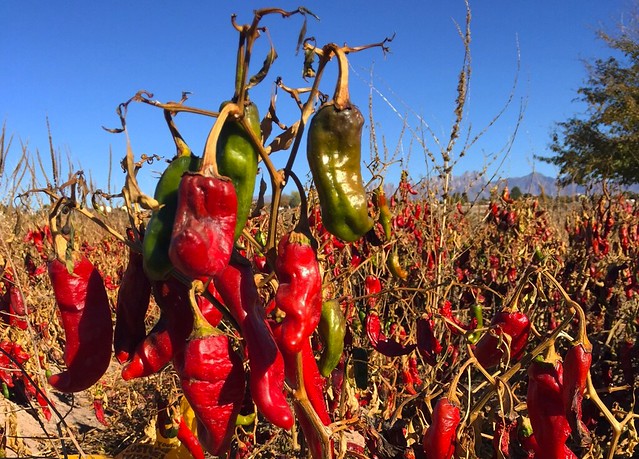-and-
Since 2022, farmers have experienced declining profits, and short-term agricultural debt has risen as farmers increase borrowing to finance production.
Source: Federal Reserve Bank of St. Louis
By Violeta Gutkowski , Jack Fuller
Photo taken by Longino Bustillos, USDA NASS: Courtesy
While currently healthy, the U.S. agriculture sector is showing some signs of weakening as lower selling prices and higher costs continue to negatively impact the profits of farmers growing row crops like corn and soybeans. In 2022, the agriculture sector was in a strong place, with high profits thanks to surging global agricultural commodity prices. Since then, farmers’ profits have been declining because of falling prices for the four most-produced U.S. crops and increasing costs for shipping and production.1
The following two figures show this decline in prices and how it is affecting profits. The first figure shows commodity prices falling since 2022 for the four most-produced U.S crops: corn, cotton, soybeans and wheat. The second figure shows the U. S. Department of Agriculture (USDA) projects farmers’ net income to continue to decrease in 2024. According to the World Bank, global agricultural prices are expected to decline further in 2025 due to improved supply conditions.
Prices for U.S. Key Crops Have Fallen from Their 2022 Peak
SOURCES: USDA’s National Agricultural Statistics Service and authors’ calculations.
NOTE: Data are from January 2022 to November 2024.
Lower Crop Prices Have Contributed to Weaker Net Farm Income
SOURCE: USDA’s Economic Research Service.
While commodity prices have fallen, overall production costs (such as fertilizers, equipment, fuel and labor) have risen since 2022 and remain elevated despite a slight decline in some production expenditures, such as fertilizers and fuel, in 2024 relative to 2023. Additionally, autumn water levels in the Mississippi River have been lower than usual during the past three years, resulting in higher shipping costs for many U.S farmers who rely on the Mississippi and its tributaries to transport goods. As production and transportation costs remain elevated alongside lower selling prices, many farmers experienced tighter finances in 2024.2 This could lead to farmers needing to finance this year’s planting through additional borrowing.
How Healthy Is the Agribusiness Sector?
The most recent data indicate that the debt-to-asset ratio stood at 13% and the debt-to-equity ratio was 15% as of 2023.3 These two data points show farms have a relatively high level of solvency, which is a sign of a healthy sector because it means farmers are better able to pay back debt when it is due. These ratios have been decreasing over the last five years, with the debt-to-asset ratio peaking at 14.1% and the debt-to-equity ratio peaking at 16.41% in 2020. Both ratios are expected to decline again in 2024, hiding some of the sector’s weakening.
Since 2022, farmers have experienced declining profits, and short-term agricultural debt has risen as farmers increase borrowing to finance production. Relative to the third quarter of 2023, total loans to the agricultural sector increased 9.8% by the third quarter of 2024.4 It should be noted that despite increases in debt and delinquency levels, the delinquency rate remains low, at 1%. Due to seasonality, debt and delinquency levels typically increase during the winter.
Reduced profits from the recent harvest season could result in higher-than-usual borrowing in 2025. Farmers must cover their cash shortfalls from the 2024 harvest pay back their loans and borrow again for the new cycle. According to the Rural Mainstreet Economy December survey conducted by Creighton University, rural bankers generally expect weak commodity prices and negative farm cash flow to continue into 2025, highlighting potential financial distress in the first quarter of 2025.
Land Value as Collateral
The main asset that farmers have is their land. As shown in the figure below, farmland values have increased steadily since 2004, and their appreciation has accelerated since 2020. When farmers own their land, they can borrow using their land as collateral and increase their debt levels as their land value appreciates. A decrease or slowdown in land value appreciation could result in less capacity to borrow from a bank.
Farmland Values Continue to Rise in Real Terms
SOURCE: USDA’s Economic Research Service.
NOTE: Farmland value includes land and buildings.
In the event a farmer cannot pay back debt, they may sell land to obtain the necessary liquidity. If land prices stagnate or decline, delinquency rates could increase as farmers’ ability to raise funds through land sales diminish.
Future Risks in Agriculture
Despite a significant rise in overall farmer sentiment following the U.S. elections, short- and long-term farmland value expectations have fallen since November 2024, according to the Purdue University-CME Group Ag Economy Barometer. Similarly, estimates from the Rural Mainstreet Report showed a reduction in land values for the seventh time since May 2024. Close attention to this sector may be needed as we go through the first quarter of 2025. Potential financial distress could be felt among some farmers not only in the Eighth Federal Reserve District states but nationwide.
Notes
- Cotton and corn prices have increased since August but remain below what they were at the beginning of 2024. Beyond those four key crops, there are a few exceptions such as rice, which saw a year-over-year increase in 2024.
- For example, our industry contacts in Mississippi noted in October that most of the state’s farmers would struggle to break even in 2024.
- Debt-to-asset ratio measures the total debt divided by the total assets held by a farm, while the debt-to-equity ratio measures total debt divided by total equity. You can read more about these ratios here.
- Data from the Federal Reserve Bank of Kansas City are through September 2024. After peaking in the second quarter—with a 16% increase in debt in 2024 relative to 2023—debt and delinquency levels usually decrease during the last two quarters of the year as funds rise during the harvest season, which occurs mainly in the second half of the year. Although debt has been rising, asset values have been appreciating faster, which explains the decline in the debt-to-asset ratio as mentioned previously.





